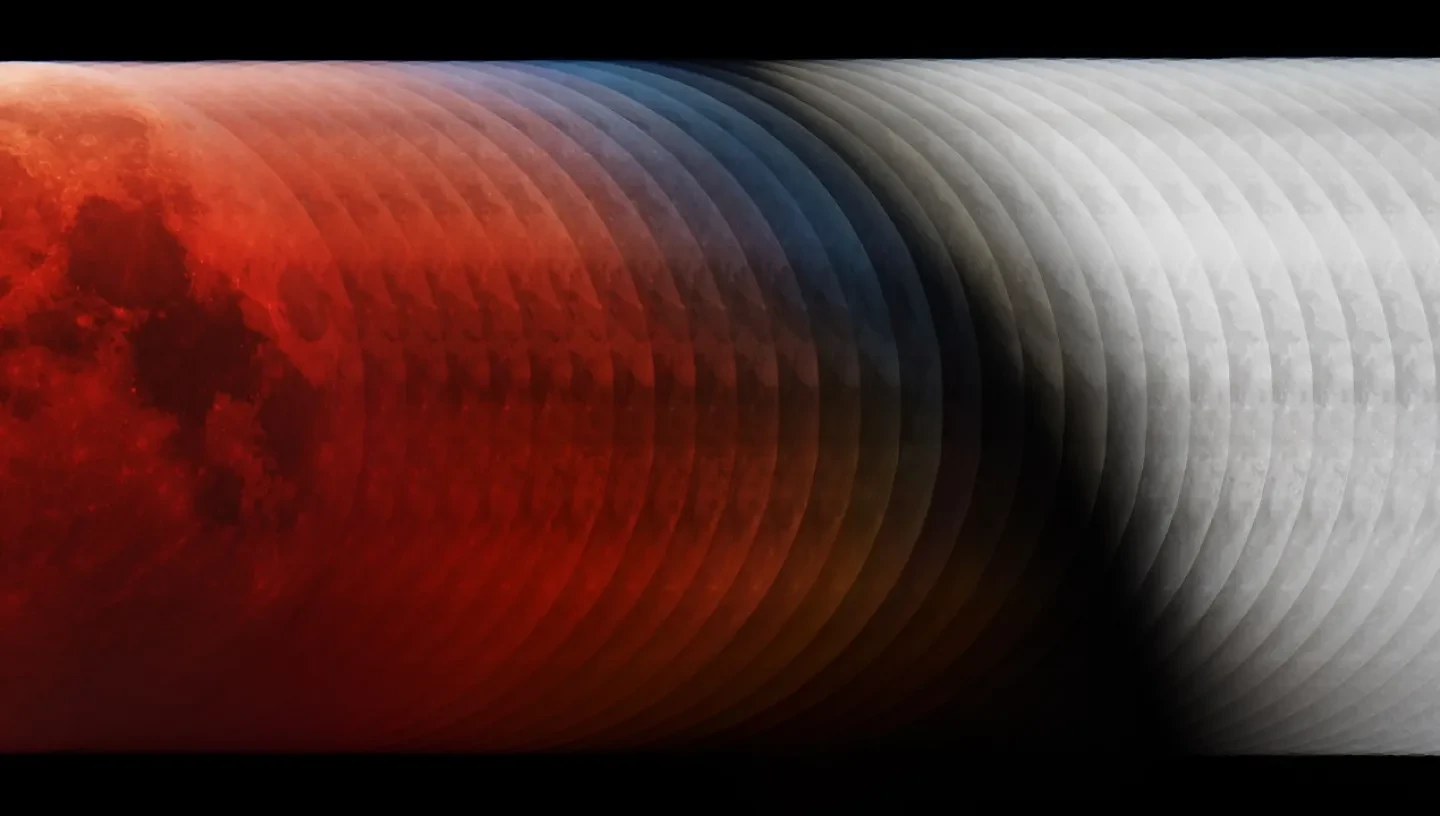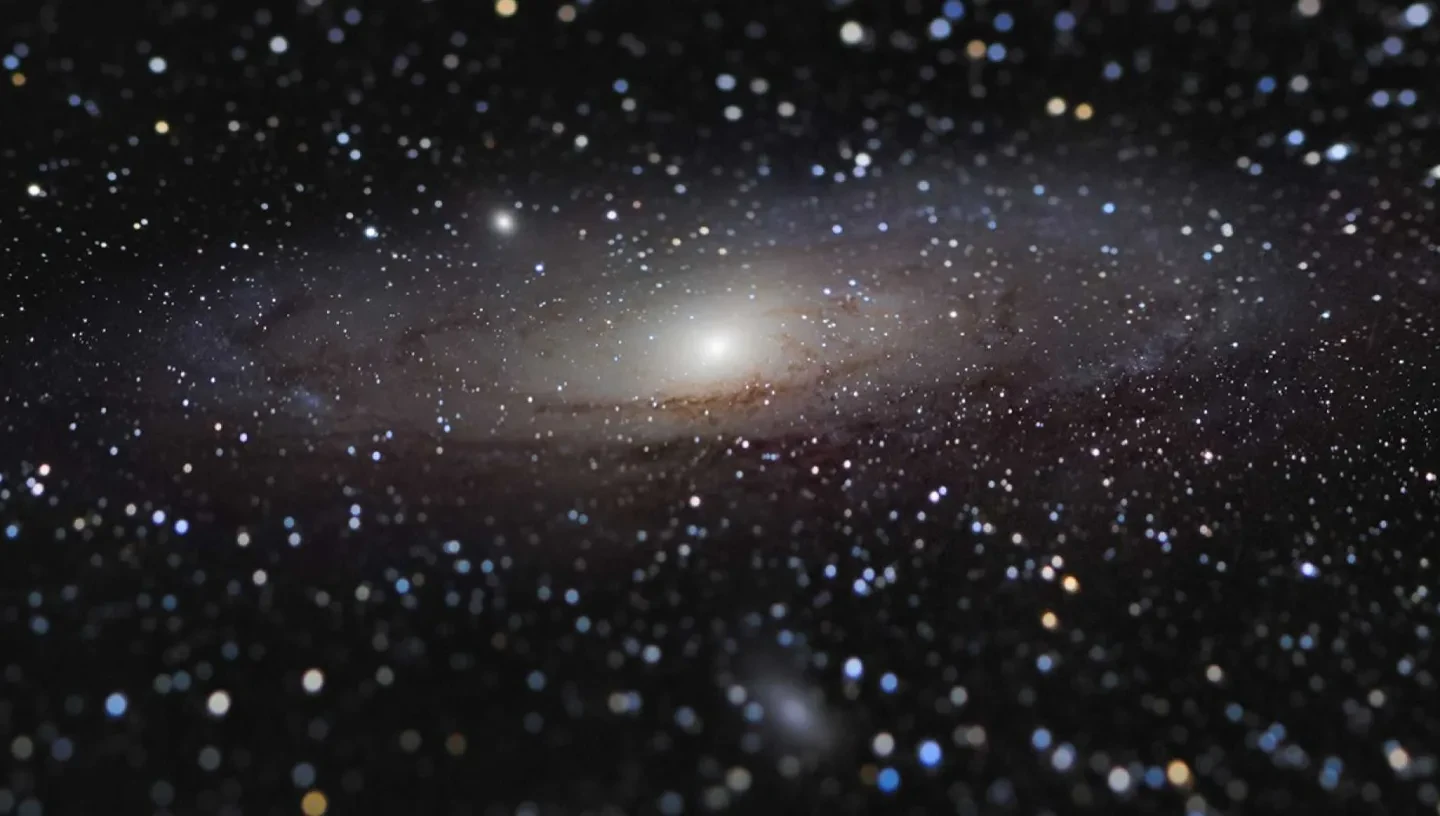
"This image depicts the 35 phases of the total lunar eclipse on 21 January in one photograph," explains 2019 winner László Francsics.
"The sequences were taken with three-minute gaps using a pre-programmed shutter remote. They were stacked onto each other using the faint background stars as a guide so that I could reveal the real orbit of the Moon. The phases were so close together that it melted in a continuous image that captured the shadow of the Earth. On the edge of the shadow a rare bluish tint, the shadow of the Earth's ozone layer, appeared."
Equipment used: 250 mm Newtonian reflecting telescope at f/4, Sky-Watcher EQ6 Pro mount, Sony Alpha 99 camera, HDR composite of 35 exposures
This image spectacularly captures the phenomenon of a lunar eclipse.
The transition from Full Moon to eclipsed Moon is quite breathtaking. The effect is enhanced by the careful alignment of the lunar features and the dark shadow of the Earth slicing through to separate the two views of the Moon.
The richness of the red reflection of the Earth’s atmosphere by the Moon is glorious but it is the unexpected capture of the Moon reflecting the Earth’s blue-tinted, high-atmosphere ozone layer that really set this image apart for me, providing a striking combination of science and art
Mandy Bailey, competition judge

